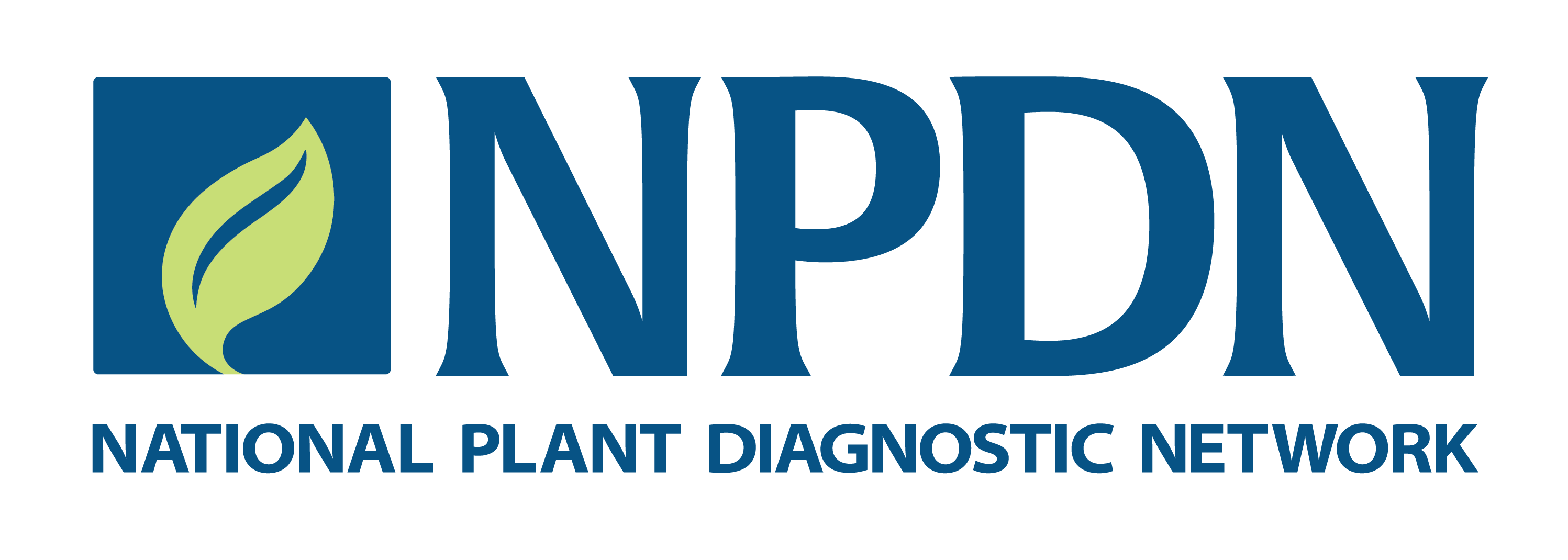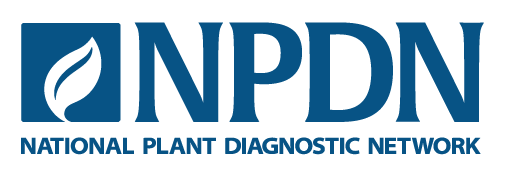James Woodhall(1), Sam Fieweger(2), Christian Cumagun(1), Sara May(3), and Lina Rodriguez-Salamanca(4)
1. University of Idaho – WPDN; 2. Wisconsin DATCP – NCPDN; 3. The Pennsylvania State University – NEPDN; 4. Virginia Tech - SPDN
The Communicator: Volume 5, Issue 8, August 2024
Triage in a plant diagnostic context means the preliminary assessment of samples to determine the priority and the activity required to complete an accurate and timely diagnosis of the sample while complying with any requirements for both laboratory safety and plant health regulations (quarantines). Here we have developed the checklist for key steps in plant diagnostic triage and the considerations associated with each.
Safety
- Are there any potentially dangerous animals (insect, spider, snakes etc.) in the sample?
- Is the actual sample dangerous (toxins, fungal spores, thorns, splinters etc.)?
- Have any pesticides been applied to the sample to make it inherently dangerous?
Quarantine
- Should the sample be opened in a biological safety cabinet?
- Do you have appropriate APHIS permits in place?
- Is the sample potentially subject to federal or state quarantine laws?
- Does the sample have the potential to contaminate your laboratory even if not subject to quarantines (e.g. Aspergillus)?
Urgency
- How urgently does the client require results?
- What are the implications in delaying a diagnosis (i.e. from a regulatory and/or potential plant disease/pest potential spread viewpoint)? Consider plant pathogen epidemic implications.
Integrity
- Is the sample suitable for examination (consider both any potential deterioration of the sample and whether initial sampling* was comprehensive enough for a diagnosis)? Is it sufficient for testing?
- How quickly will the sample deteriorate in storage prior to a complete diagnosis?
- What is the most appropriate storage option to maintain optimum sample integrity?
Documentation
Has the client provided you with the necessary documentation for:
- Contacting the client
- Invoice to/payment from the client
- Diagnosis (symptom incidence, pesticide applications, field history, date symptoms first noticed, etc.)
- What is the symptom the grower is most concerned about?
- Has the grower submitted any photographs associated with the sample by email or text to the lab or colleagues which could assist in diagnosis?
- Has the grower requested specific testing?
- Do client sample numbers/descriptions tally with other provided documentation?
Examination
- Can the sample be examined fully on the day of receipt? If not consider appropriate storage to maintain sample integrity.
- Will opening the package and subsampling damage the sample and adversely impact any further testing required?
- Consider symptoms and signs in the sample and tissues submitted, and any information from digital images; what relevant information is missing?
Referral
- Does the sample need to be referred to another diagnostician on your team? Refer to another internal/ external laboratory? Consult with internal or external specialist(s)t?
- Does the sample require laboratory testing offered by your laboratory?
- Does the sample need to be referred to another diagnostic laboratory for specific testing?
- Are there any survey or research projects in other labs this sample would benefit from being dispatched to?
*Has the initial sampling submitted whole plant samples when appropriate (i.e. just submitted leaves when potentially a root disease)? Do you have the appropriate range of samples (a range of dead, symptomatic and healthy samples)? Do you have the appropriate sample type (plant, soil, or photograph for tree diseases).
References
Lane CR, Beales PA, Hughes KJD (2023). Fungal Plant Pathogens Applied Techniques, 2nd Edition. CABI.

